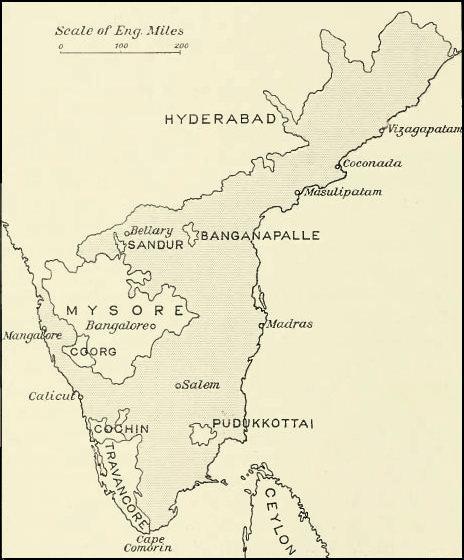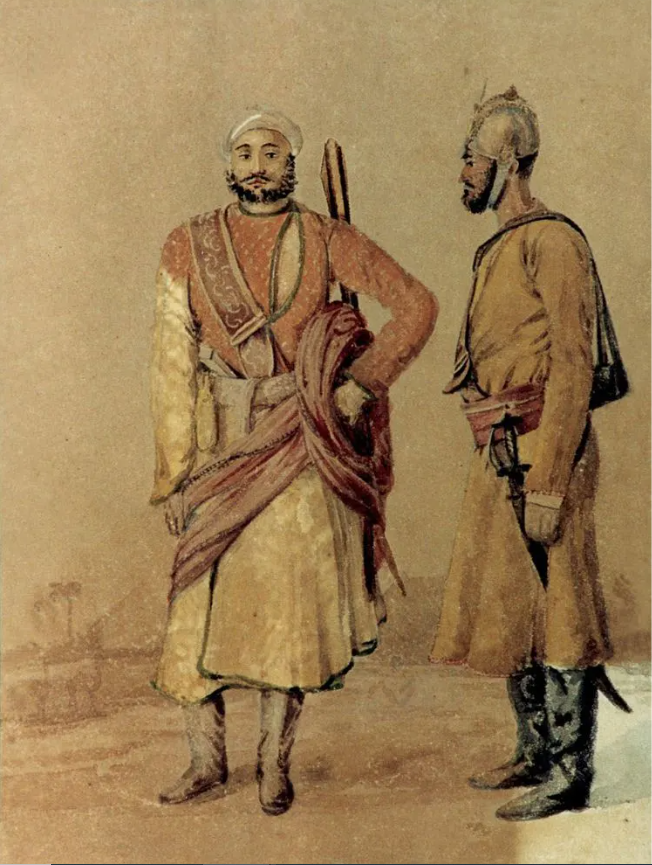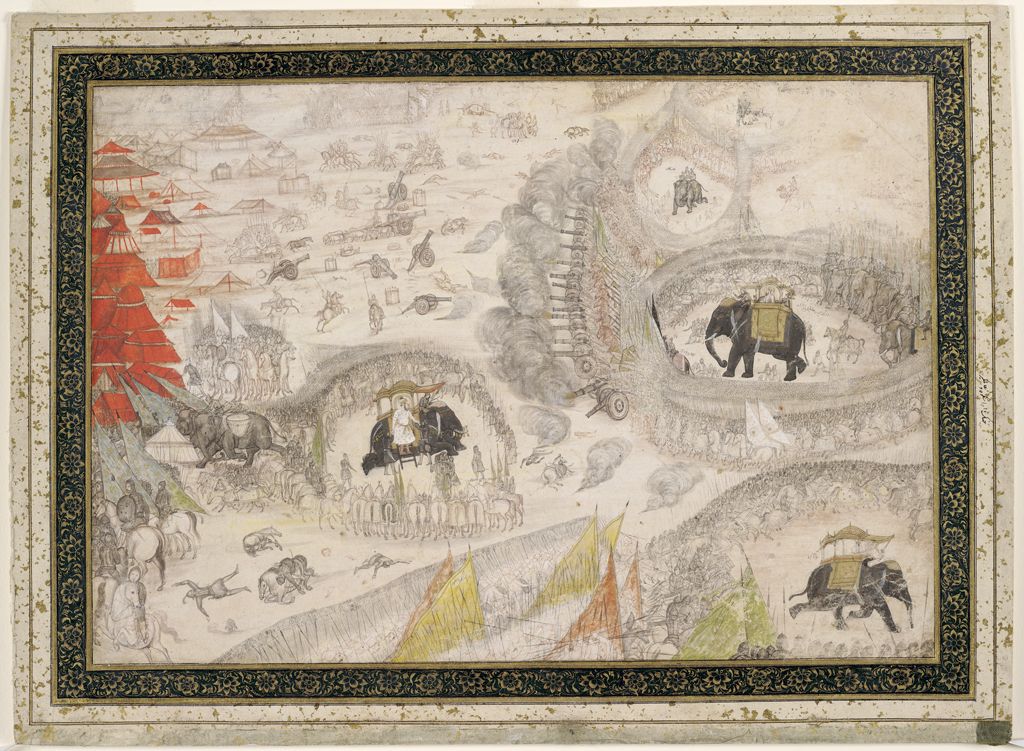|
Flag Of The Mughal Empire
This is a list of the flags of the Mughal Empire, which had a number of imperial flags and standards. The principal imperial standard of the Mughals was known as the ''alam'' ( ). It was primarily moss green. It displayed a lion and sun ( ) facing the hoist of the flag. The Mughals traced their use of the ''alam'' back to Timur. The imperial standard was displayed to the right of the throne and also at the entrance of the Emperor's encampment and in front of the emperor during military marches. History According to the ''Ain-i-Akbari'', during Akbar's reign, whenever the emperor rode out, not less than five ''alams'' were carried along with the ''qur'' (a collection of flags and other insignia) wrapped up in scarlet cloth bags. They were unfurled on the days of festivity, and in battle. Edward Terry, chaplain to Sir Thomas Roe, who came during the reign of Jahangir, described in his ''Voyage to East-India'' (1655) that the royal standard, made of silk, featuring the Nad-e-A ... [...More Info...] [...Related Items...] OR: [Wikipedia] [Google] [Baidu] |
Islamic Flags
An Islamic flag is a flag either representing an Islamic Caliphate or religious order, state, civil society, military force or other entity associated with Islam. Islamic flags have a distinct history due to the Islamic prescription on aniconism, making particular colours, inscriptions or symbols such as crescent-and-star popular choices. Since the time of the Islamic prophet Muhammad, flags with certain colours were associated with Islam according to the traditions. Since then, historical Caliphates, modern nation states, certain denominations as well as religious movements have adopted flags to symbolize their Islamic identity. History Early Islam Before the advent of Islam, banners as tools for signaling had already been employed by the pre-Islamic Arab tribes and the Byzantines. Early Muslim army naturally deployed banners for the same purpose. Early Islamic flags, however, greatly simplified its design by using plain color, due to the Islamic prescriptions on aniconi ... [...More Info...] [...Related Items...] OR: [Wikipedia] [Google] [Baidu] |
Shah Jahan
Shihab-ud-Din Muhammad Khurram (5 January 1592 – 22 January 1666), better known by his regnal name Shah Jahan I (; ), was the fifth emperor of the Mughal Empire, reigning from January 1628 until July 1658. Under his emperorship, the Mughals reached the peak of their architectural achievements and cultural glory. The third son of Jahangir (), Shah Jahan participated in the military campaigns against the Rajputs of Mewar and the Lodis of Deccan. After Jahangir's death in October 1627, Shah Jahan defeated his youngest brother Shahryar Mirza and crowned himself emperor in the Agra Fort. In addition to Shahryar, Shah Jahan executed most of his rival claimants to the throne. He commissioned many monuments, including the Red Fort, Shah Jahan Mosque and the Taj Mahal, where his favorite wife Mumtaz Mahal is entombed. In foreign affairs, Shah Jahan presided over the aggressive campaigns against the Deccan Sultanates, the conflicts with the Portuguese, and the wars with Safavids ... [...More Info...] [...Related Items...] OR: [Wikipedia] [Google] [Baidu] |
Nawab Of Banganapalle
Banganapalle State was one of the princely states of India during the period of the British Raj. The state was founded in 1665 and had its capital in Banganapalle. Its rulers were Shia Muslims and the last one signed the accession to the Indian Union on 23 February 1948. See also *Nawab of Masulipatam *Masulipatam *Nizam of Hyderabad The Nizams were the rulers of Hyderabad from the 18th through the 20th century. Nizam of Hyderabad (Niẓām ul-Mulk, also known as Asaf Jah) was the title of the monarch of the Hyderabad State ( divided between the state of Telangana, Mar ... * Formation of Andhra Pradesh References {{Authority control Princely states of India Muslim princely states of India Shia dynasties History of Andhra Pradesh Kurnool district 1665 establishments in India 1948 disestablishments in India ... [...More Info...] [...Related Items...] OR: [Wikipedia] [Google] [Baidu] |
Nawab Of Bengal
The Nawab of Bengal ( bn, বাংলার নবাব) was the hereditary ruler of Bengal Subah in Mughal India. In the early 18th-century, the Nawab of Bengal was the ''de facto'' independent ruler of the three regions of Bengal, Bihar, and Orissa which constitute the modern-day sovereign country of Bangladesh and the Indian states of West Bengal, Bihar and Orissa. They are often referred to as the Nawab of Bengal, Bihar and Orissa ( bn, বাংলা, বিহার ও উড়িষ্যার নবাব). The Nawabs were based in Murshidabad which was centrally located within Bengal, Bihar, and Odisha. Their chief, a former prime minister, became the first Nawab. The Nawabs continued to issue coins in the name of the Mughal Emperor, but for all practical purposes, the Nawabs governed as independent monarchs. Bengal continued to contribute the largest share of funds to the imperial treasury in Delhi. The Nawabs, backed by bankers such as the Jagat Seth, became th ... [...More Info...] [...Related Items...] OR: [Wikipedia] [Google] [Baidu] |
Bengal Subah
The Bengal Subah ( bn, সুবাহ বাংলা; fa, ), also referred to as Mughal Bengal ( bn, মোগল বাংলা), was the largest subdivision of the Mughal Empire (and later an independent state under the Nawabs of Bengal) encompassing much of the Bengal region, which includes modern Bangladesh and the Indian state of West Bengal, Indian state of Bihar, Jharkhand, Odissa between the 16th and 18th centuries. The state was established following the dissolution of the Bengal Sultanate, a major trading nation in the world, when the region was absorbed into one of the gunpowder empires. Bengal was the wealthiest region in the Indian subcontinent, due to their thriving merchants, Seth's, Bankers and traders and its proto-industrial economy showed signs of driving an Industrial revolution. Bengal Subah has been variously described the "Paradise of Nations" and the "Golden Age of Bengal", due to its inhabitants' living standards and real wages, which were a ... [...More Info...] [...Related Items...] OR: [Wikipedia] [Google] [Baidu] |
Nawab Of Carnatic
The Carnatic Sultanate was a kingdom in South India between about 1690 and 1855, and was under the legal purview of the Nizam of Hyderabad, until their demise. They initially had their capital at Arcot in the present-day Indian state of Tamil Nadu. Their rule is an important period in the history of the Carnatic and Coromandel Coast regions, in which the Mughal Empire gave way to the rising influence of the Maratha Empire, and later the emergence of the British Raj. Borders The old province known as the Carnatic, in which Madras (Chennai) was situated, extended from the Krishna river to the Kaveri river, and was bounded on the West by Mysore kingdom and Dindigul, (which formed part of the Sultanate of Mysore). The Northern portion was known as the ' Mughal Carnatic', the Southern the 'Maratha Carnatic' with the Maratha fortresses of Gingee and Ranjankudi. Carnatic thus was the name commonly given to the region of Southern India that stretches from the East Godavari of An ... [...More Info...] [...Related Items...] OR: [Wikipedia] [Google] [Baidu] |
Nizam Of Hyderabad
The Nizams were the rulers of Hyderabad from the 18th through the 20th century. Nizam of Hyderabad (Niẓām ul-Mulk, also known as Asaf Jah) was the title of the monarch of the Hyderabad State ( divided between the state of Telangana, Marathwada, Marathwada region of Maharashtra and Kalyana-Karnataka region of Karnataka). ''Nizam'', shortened from ''Nizam-ul-Mulk'', meaning ''Administrator of the Realm'', was the title inherited by Asaf Jah I. He was the former ''Naib'' (suzerain) of the Great Mughal in the Deccan, the premier courtier of Mughal India until 1724, the founding of an independent monarchy as the "Nizam (title) of Hyderabad". The Asaf Jahi dynasty was founded by Qamar-ud-din Khan, Asaf Jah I, Mir Qamar-ud-Din Siddiqi (Asaf Jah I), who served as a ''Naib'' of the Deccan sultanates under the Moghul Empire from 1713 to 1721. He intermittently ruled the region after Emperor Aurangzeb's death in 1707. In 1724 Mughal control weakened, and Asaf Jah became virtually ... [...More Info...] [...Related Items...] OR: [Wikipedia] [Google] [Baidu] |
Bahadur Shah Zafar
Bahadur Shah II, usually referred to by his poetic title Bahadur Shah ''Zafar'' (; ''Zafar'' Victory) was born Mirza Abu Zafar Siraj-ud-din Muhammad (24 October 1775 – 7 November 1862) and was the twentieth and last Mughal Emperor as well as an Urdu poet. He was the second son and the successor to his father, Akbar II, who died on 28 September 1837. He was a titular Emperor, as the Mughal Empire existed in name only and his authority was limited only to the walled city of Old Delhi (Shahjahanbad). Following his involvement in the Indian Mutiny of 1857, the British exiled him to Rangoon in British-controlled Burma in 1858, after convicting him on several charges. Bahadur Shah Zafar's father, Akbar II, had been imprisoned by the British and he was not his father's preferred choice as his successor. One of Akbar Shah's queens pressured him to declare her son, Mirza Jahangir, as his successor. However, The East India Company exiled Jahangir after he attacked their resident in ... [...More Info...] [...Related Items...] OR: [Wikipedia] [Google] [Baidu] |
Asaf-ud-Daulah
Mirza Asaf-ud-Daula (23 September 1748 – 21 September 1797) was the Nawab wazir of Oudh ratified by Shah Alam II, from 26 January 1775 to 21 September 1797, and the son of Shuja-ud-Dowlah. His mother and grandmother were the Begums of Oudh. Reign Asaf-ud-Daula became nawab at the age of 26, on the death of his father, Shuja-ud-Daula, on 28 January 1775. He assumed the throne with the aid of the British East India Company, outmanoeuvring his younger brother Saadat Ali who led a failed mutiny in the army. British Colonel John Parker defeated the mutineers decisively, securing Asaf-ud-Daula's succession. His first chief minister was Mukhtar-ud-Daula who was assassinated in the revolt. The other challenge to Asaf's rule was his mother Umat-ul-Zohra (better known as Bahu Begum), who had amassed considerable control over the treasury and her own ''jagirs'' and private armed forces. She, at one point, sought the Company's direct assistance in the appointment of anti-Asaf minist ... [...More Info...] [...Related Items...] OR: [Wikipedia] [Google] [Baidu] |
Alivardi Khan
Alivardi Khan (1671 – 9 April 1756) was the Nawab of Bengal from 1740 to 1756. He toppled the Nasiri dynasty of Nawabs by defeating Sarfaraz Khan in 1740 and assumed power himself. During much of his reign Alivardi encountered frequent Maratha raids under Raghuji Bhonsle, culminating in the surrender of the province of Orissa in a peace settlement in 1751. He also faced separatist rebellions in Bihar as well as a revolt from his grandson Siraj ud-Daulah, though these were suppressed. Alivardi spent the latter part of his reign rebuilding Bengal. He was a patron of the arts and resumed the policies of Murshid Quli Khan. He maintained a politically neutral stance with the European powers in the subcontinent and prevented any infighting amongst them in his dominions. He was succeeded by Siraj ud-Daulah in 1756. Early life Born in one of the cities of the Deccan in 1676, he was originally given the name Mirza Muhammad Ali. His father Mirza Muhammad Madani, who was of either Ar ... [...More Info...] [...Related Items...] OR: [Wikipedia] [Google] [Baidu] |
Aurangzeb
Muhi al-Din Muhammad (; – 3 March 1707), commonly known as ( fa, , lit=Ornament of the Throne) and by his regnal title Alamgir ( fa, , translit=ʿĀlamgīr, lit=Conqueror of the World), was the sixth emperor of the Mughal Empire, ruling from July 1658 until his death in 1707. Under his emperorship, the Mughals reached their greatest extent with their territory spanning nearly the entirety of South Asia. Widely considered to be the last effective Mughal ruler, Aurangzeb compiled the Fatawa 'Alamgiri and was amongst the few monarchs to have fully established Sharia and Islamic economics throughout South Asia.Catherine Blanshard Asher, (1992"Architecture of Mughal India – Part 1" Cambridge university Press, Volume 1, Page 252. Belonging to the aristocratic Timurid dynasty, Aurangzeb's early life was occupied with pious pursuits. He held administrative and military posts under his father Shah Jahan () and gained recognition as an accomplished military commander. Aurang ... [...More Info...] [...Related Items...] OR: [Wikipedia] [Google] [Baidu] |
Battle Of Samugarh
Battle of Samugarh, Jang-e-Samugarh, (May 29, 1658), was a deciding battle in the struggle for the throne during the ''Mughal war of succession (1658–1659)'' between the sons of the Mughal Emperor Shah Jahan after the emperor's serious illness in September 1657. The battle of Samugarh was fought between his sons Dara Shikoh (the eldest son and heir apparent) and his two younger brothers Aurangzeb and Murad Baksh (third and fourth sons of Shah Jahan) to decide who will be the heir of the throne after their father. Dara Shikoh began to retreat towards Samugarh, about 10 miles (16 km) east of Agra, India, south of the Yamuna River, after Aurangzeb had defeated Dara Shikoh's forces during the Battle of Dharmat. Aurangzeb and his smaller but formidable army then flanked Dara’s fortified line along the Chambal River by finding a little-known and unguarded ford. The battle was fought during northern India's warmest season and Aurangzeb's men were on the march for a very long whi ... [...More Info...] [...Related Items...] OR: [Wikipedia] [Google] [Baidu] |








